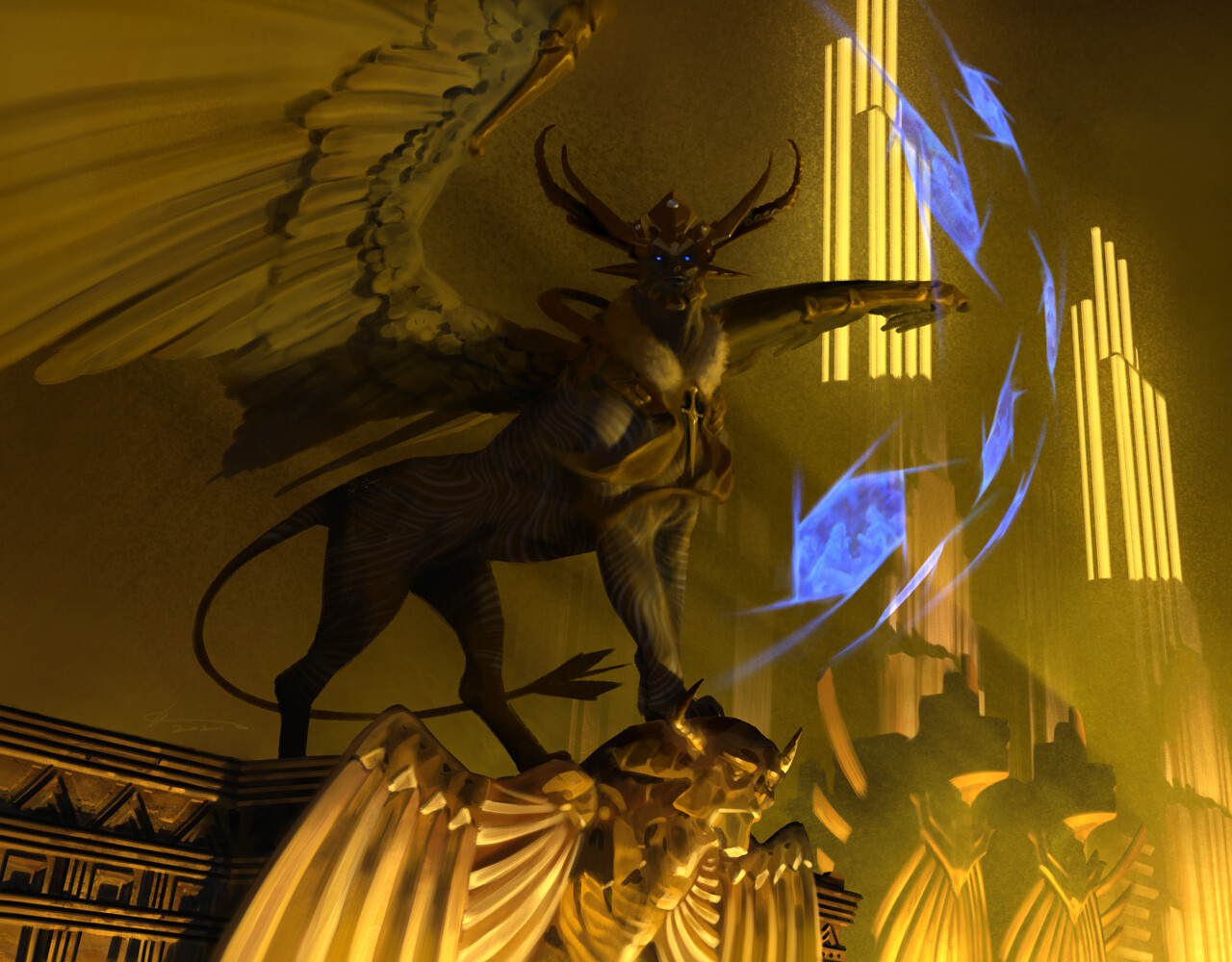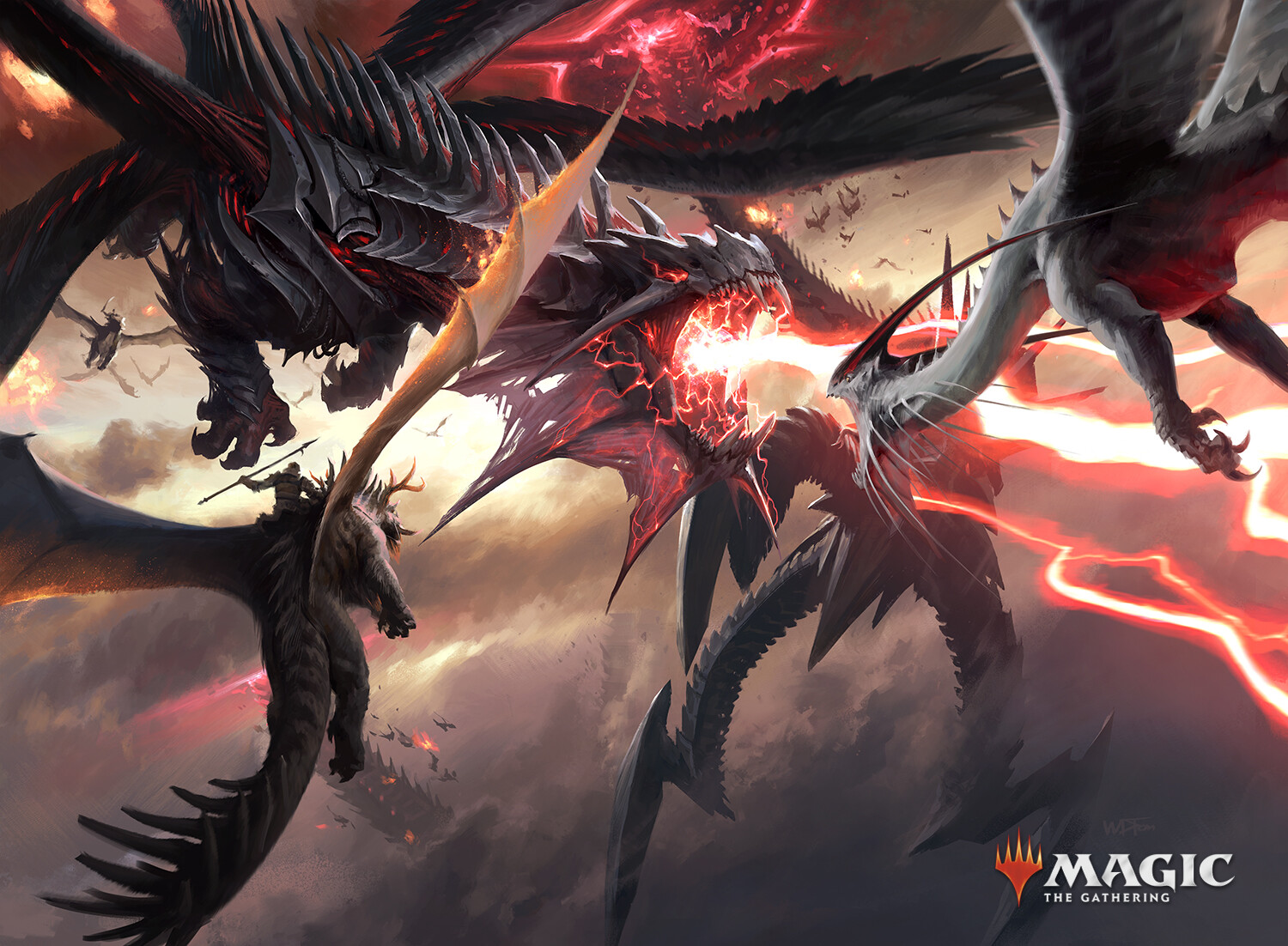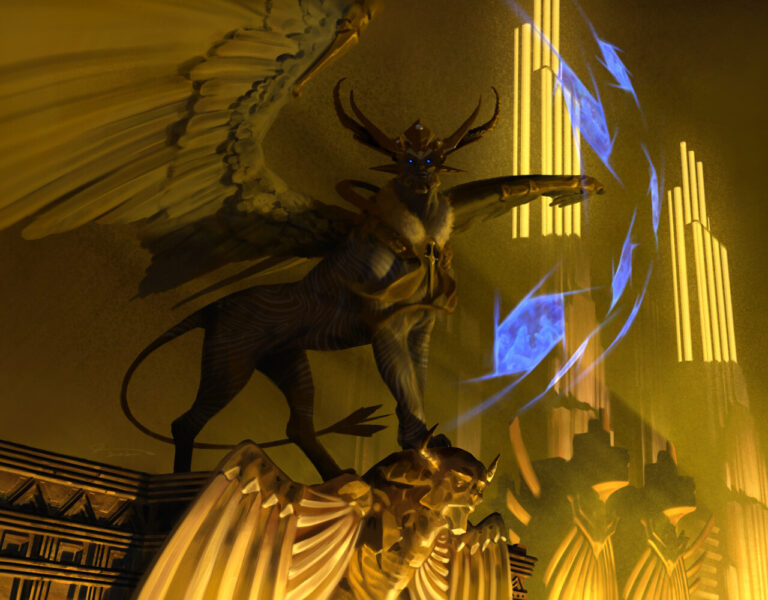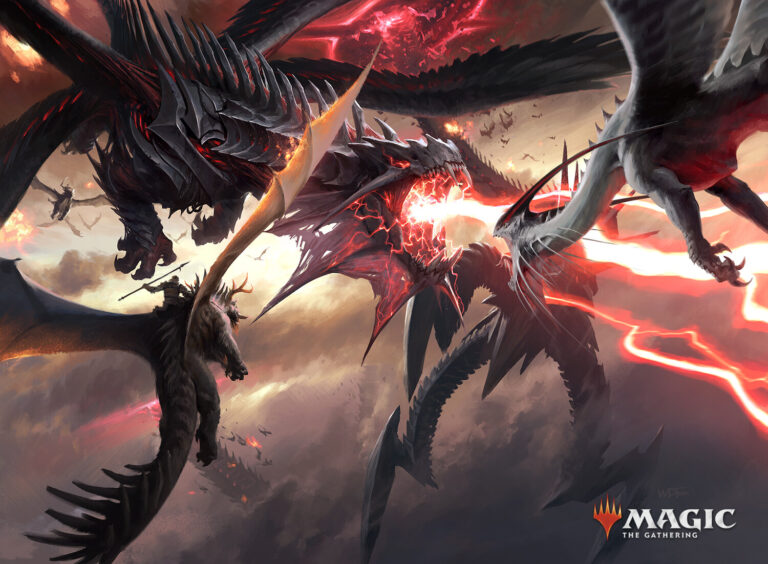With its hard to remember name, this Commander and unexpected Chef showcases its skills effortlessly, blending aggression and insane combos, posing a constant threat at the game table, and often “cooking” its opponents to perfection: Asmoranomardicadaistinaculdacar.
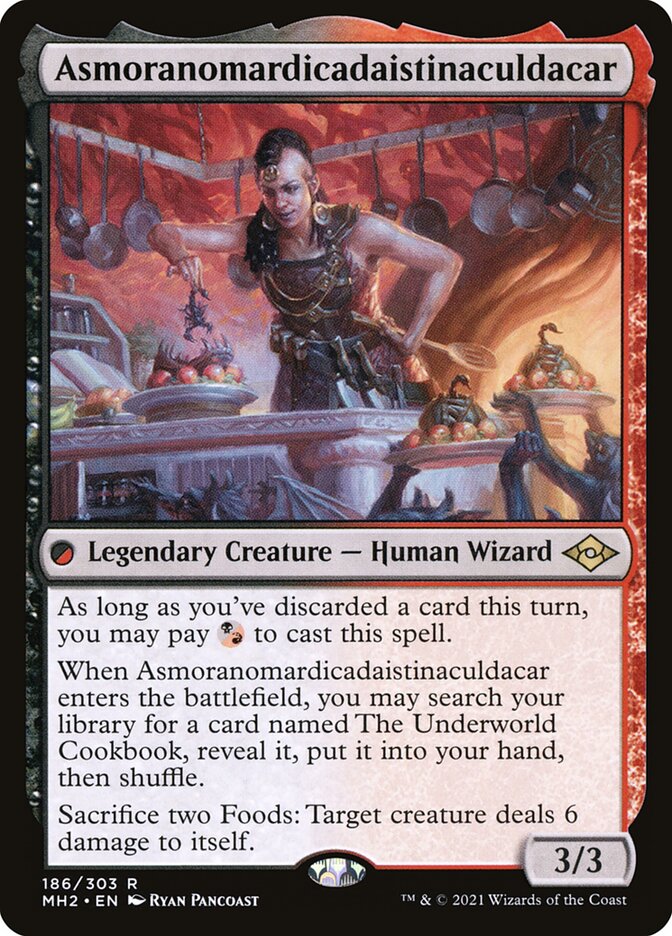
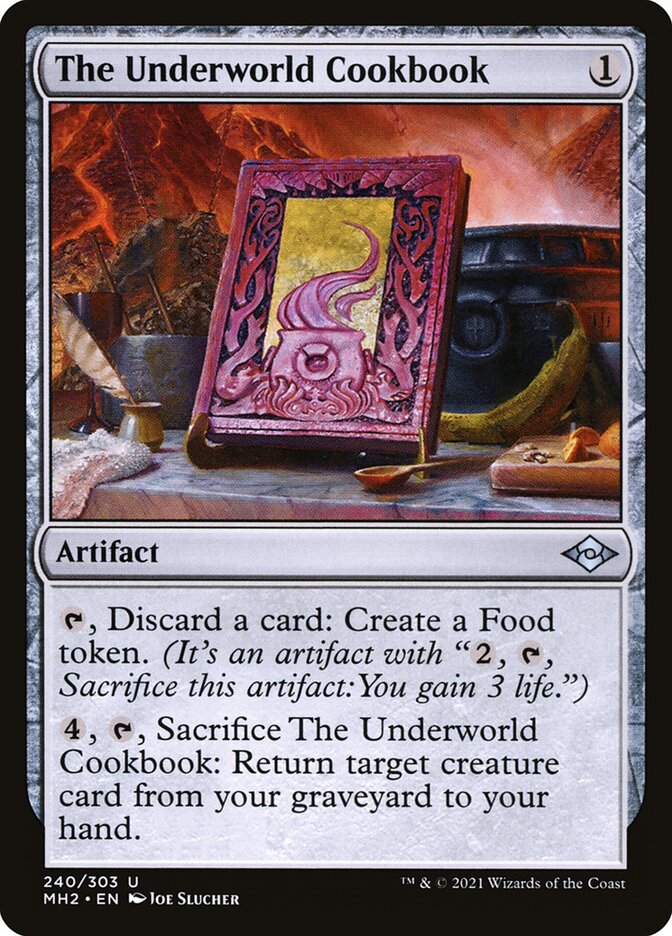
I’m Andrea Bosco (Re del Commander on Moxfield) and this is the deck list we’ll analyze today.
Deck structure
The unique strength of this Commander lies in how quickly it can be cast, creating immediate board pressure. The removal provided by the Food tokens generated with The Underworld Cookbook allows to draining the opponent’s life.
Asmoranomardicadaistinaculdacar is a 3/3 with no casting cost (mana value 0) and can be cast for a single hybrid R/B mana (very cheap) only if a card has been discarded that turn. When it enters the battlefield, you can search your deck for The Underworld Cookbook. Asmo also has the powerful ability to sacrifice two Food tokens to deal 6 damage to a target creature.
The impression you get when playing this Commander is that it moves very quickly, aided by the deck’s low curve (around 2.3 excluding lands) and with easy lethal damage during the early stages of the game. We can agree that this deck, along with Yoshimaru, Ever Faithful + Jeska, Thrice Reborn, is one of the top competitive aggro decks in the format.
The deck is filled with advantages and interesting synergies that stabilize the game plan: casting Asmo quickly (testing shows a first-turn cast probability between 34% and 38%, based on our mulligans and our decklist). Having Asmo on the field early (recovering any disadvantage from discarding a card to cast it, with cards like Circling Vultures and Faerie Macabre, allowing you to tutor The Underworld Cookbook), and attacking by the second turn kicks off a rigorous race. The value of our deck is made by our engine: The Underworld Cookbook.
This incredible engine is a top-tier enabler, providing a discard effect for casting Madness spells at lower cost and unexpected timing. Generating Food tokens for Asmo to clear the way of potential blockers can be useful in certain aggro matchups or those based on the Scapeshift mechanic.
Gameplan
This archetype presents easily delineated match-ups:
- against tempo: generally favorable (about 60/40), as Asmo’s built-in removal can easily handle most of the opponent’s creatures. The aggressive game plan and excellent synergies can destabilize the linearity of typical tempo decks. The main exception might be Geist of Saint Traft, which is immune to Asmo’s ability, but even then, it’s challenging for the opponent to race.;
- against midrange: similar to tempo matchups, the goal is to pressure the opponent’s life total quickly with Asmo and the Cookbook, preserving removal for key threats, especially if the opponent’s deck includes combo elements.;
- against aggro: the deck’s ability to build a solid board and Asmo’s removal keeps the match fairly balanced, though opponent overboard situations can stall Asmo’s plan. Food tokens can sometimes provide necessary life gain.;
- against combo (including reanimator): interactions are limited (Dauthi Voidwalker, Scarab Feast, Faerie Macabre, and Maddening Hex), making this matchup generally unfavorable (40/60).;
- against control: the strategy is to aggressively pressure the opponent’s life total quickly. Although Asmo appears to have the advantage, it can struggle against control’s numerous removal options, especially those targeting The Underworld Cookbook.
Mulligans should be aggressive, looking for an enabler to cast the Commander quickly and maintain the aggressive game plan. The mana base is tight, often keeping hands with only a couple of mana sources.
Deck building choices
- Ob Nixilis, the Adversary stalls the board and pressures the opponent’s hand or life.
- Anger and Filth are crucial (Filth especially with Urborg, Tomb of Yawgmoth).
- Broadside Bombardiers can turn a single Food token into significant damage.
- Detective’s Phoenix is favored over Kroxa, Titan of Death’s Hunger to avoid overlap. Its Bestow ability bypasses spot removal and remains on the board.
- Gut, True Soul Zealot turns any artifact or creature into a threat.
- Inti, Seneschal of the Sun fits perfectly, turning advantage into more advantage.
- Nethergoyf benefits from the diverse card types in the graveyard.
- Poxwalkers and Skyfire Phoenix work well with Asmo or cards from exile.
- Rapacious Guest synergizes perfectly, generating Food tokens and taking advantage of Asmo’s ability.
- Syr Ginger, the Meal Ender is an ideal addition, gaining power from artifacts hitting the graveyard.
- Souls of the Lost acts as a modern Tarmogoyf and an enabler for the deck’s mechanics.
- Price of Progress is a staple for aggro archetypes.
- Mox Amber and Mox Opal provide speed, often active due to The Underworld Cookbook and artifact lands.
- Fable of the Mirror-Breaker supports the midrange plan, discards cards, and creates creatures.
- Grim Reaper’s Sprint can turn races around for 2 mana.
- Tinybones Joins Up is another enabler for casting the Commander, dealing damage over time and filling the graveyard.
- Caustic Bronco generates advantage with its Saddle 3 ability, dealing significant damage with high mana value cards.
- Spymaster’s Vault is an alternative utility land.
- Lion’s Eye Diamond is a viable choice but often feels forced.
- Daretti, Ingenious Iconoclast is another Planeswalker option, providing board management and artifact hate.
- Mayhem Devil interacts well in midrange metas.
- Ovalchase Daredevil and Squee, Goblin Nabob offer pure fuel for the deck.
- The discard suite is limited to Thoughtseize and the versatile Collective Brutality.
- Blood Moon and Magus of the Moon are excluded due to the limited number of basic Swamps.Reanimate and Unearth provide good recursion for graveyard creatures.
- Tainted Pact and Laelia, the Blade Reforged are possible additions for those pursuing a combo route.
Conclusion
Asmoranomardicadaistinaculdacar is a formidable Commander, consistently presenting a straightforward game plan and effectively facing various opponents. This deck is fairly complex, requiring knowledge of its intrinsic synergies and keen insight to capitalize on small advantages. The deck costs around €1000, mainly due to the essential Badlands, but the investment is justified by the deck’s potential performance.
Written by
Andrea Bosco



